- Adam Hawkey
- Read Time: 4 mins
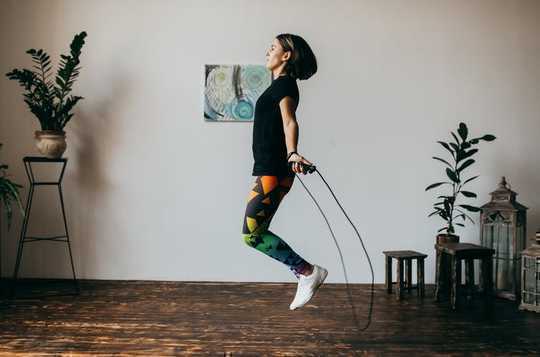
A third of humanity is now under lockdown. This measure is crucial to minimise the spread of COVID-19, but what impact will it have on health and wellbeing?

A third of humanity is now under lockdown. This measure is crucial to minimise the spread of COVID-19, but what impact will it have on health and wellbeing?
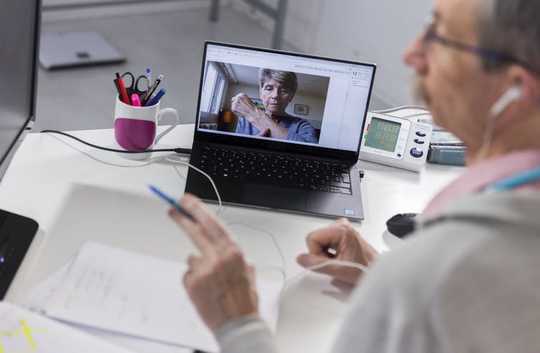 To avoid the high risk COVID-19 poses to older adults with chronic illnesses, many doctors have shifted appointments to telemedicine. BSIP/Universal Images Group via Getty Images
To avoid the high risk COVID-19 poses to older adults with chronic illnesses, many doctors have shifted appointments to telemedicine. BSIP/Universal Images Group via Getty Images
Amid the stress and confusion of coronavirus shutdowns and social distancing orders, it can seem to older patients as though everything is on pause. Clinics have postponed regular office visits. Patients worry about going to pharmacies and grocery stores. There’s even anecdotal evidence that people with serious issues such as chest pain are avoiding emergency rooms.
One important fact must not get overlooked amid this pandemic: Chronic health conditions still need attention.
If you had diabetes before the pandemic, you still have diabetes and should be monitoring your blood sugar levels. If you were advised to follow a low-salt diet before the pandemic to control your blood pressure, you still need to follow a low-salt diet during what my spouse calls “the duration.” If you had to check in with your doctor if your weight increased from underlying congestive heart failure, you still need to check your weight daily and call your doctor.
As I remind my geriatric patients, taking care of chronic conditions is even more critical right now as the new coronavirus raises the risk for people with underlying medical problems.
If you have chronic medical conditions and you become infected with the coronavirus, you’ll likely face an increased risk of developing severe symptoms.
The Centers for Disease Control and Prevention looked at a sample of U.S. patients with COVID-19 and found that 89% of those hospitalized in March had underlying conditions. The percentage rose to 94% for patients age 65 and older.
COVID-19 primarily affects the lungs, and people with lung diseases, such as COPD, have less “pulmonary reserve,” which is like having a backup generator waiting to kick in if the power goes out. So, what might have been a mild infection for someone else can develop into a severe infection for someone with lung problems.
Beyond the lungs, doctors and scientists are starting to see signs that COVID-19 may have devastating effects on the kidneys and heart. An extreme immune system response known as a cytokine storm can damage organs, and mini blood clots have developed in some patients.
High blood pressure, congestive heart failure or diabetes can also increase the risk of developing severe symptoms from COVID-19. In the CDC sample, 73% of older patients hospitalized with COVID-19 also had hypertension, about a third had diabetes and just over half had cardiovascular disease.
Managing chronic conditions amid a pandemic is not easy. It requires adjusting daily routines and dealing with new obstacles.
One of the challenges is medical appointments. During the pandemic, most geriatric clinics have postponed in-person visits for routine check-ups to avoid exposing patients or staff to the coronavirus. But that doesn’t mean your doctor isn’t there for you.
My clinic, for example, has transitioned most patient appointments to telehealth. This allows us to keep in touch with our patients and their symptoms and to adjust treatment plans in real time.
Online portals with “virtual waiting rooms” allow for video visits between patient and doctor. For patients who don’t have access to the internet or aren’t as comfortable with the technology, the telephone works, too. Patients can send photos of injuries. Over 90% of my clinic visits with my geriatric patients are now by telephone. We schedule time for the clinic appointment, the clinic staff registers the patient, and then I call the patient for the check-up.
I was in the middle of one of these visits recently when a patient asked me if I thought they should try telehealth. I was surprised by the question, and the patient was surprised by my answer – we were in the middle of a telehealth visit. I realized that the common picture of telehealth conveys a complex process, perhaps similar to calling a customer service line.
Telehealth is typically arranged with your own doctor – same doctor, same relationship – just a different physical connection.
Even if a clinic no longer has routine patient appointments, the office is probably still staffed. Patients can call the clinic and may also be able to request medication refills online.
Patients should check if their insurance company will allow 90-day supplies rather the usual 30 days so they can limit trips to the pharmacy. Some pharmacies are also providing medication delivery or curbside pickup now so high-risk patients don’t have to walk inside the store.
Diet is often one of the toughest adjustments needed for controlling chronic medical conditions.
Watching what we eat can be even more challenging during a pandemic. Following a low-carb diet for diabetes, following a low-salt diet for congestive heart failure or following a low-cholesterol diet for heart disease isn’t simple when people are sitting at home with stocked pantries and unable to get to the grocery store for fresh produce.
To avoid snacking out of boredom, try creating a daily meal and snack schedule.
Staying hydrated can also help. Hormones that tell us when we need to drink something don’t respond as well as we age, so our bodies may need water rather than an unhealthy snack.
If getting to the grocery store is a challenge, check if the store has senior-only hours, delivery or curbside pickup. A friend, neighbor or family member might be able to go grocery shopping for you. Many people are eager to help and just need to be asked.
Even if you don’t get COVID-19, it is still critically important that you continue to manage your chronic medical conditions.
When chronic conditions aren’t managed, patients run a higher risk of ending up in the emergency room and hospital – places where COVID-19 patients are likely also being treated and that have become overburdened amid the pandemic.
One of the best ways to help them is to take care of yourself. Stay home. Stay well. Stay connected.
Laurie Archbald-Pannone, Associate Professor Medicine, Geriatrics, University of Virginia
This article is republished from The Conversation under a Creative Commons license. Read the original article.
books_health

Spending just 20 minutes in nature can significantly lower stress hormone levels, researchers say.

Aerosols are the tiny floating pieces of pollution that make up Los Angeles’ famous smog, the dust particles you see floating in a ray of sunshine and also the small droplets of liquid that escape your mouth when you talk, cough or breathe.

Has this ever happened to you? You’re eating a delicious ice cream cone or frozen lemonade, so cold and sweet and suddenly, bam, brain freeze! What happened?
 You’re allowed to eat foods like eggs, avocados and berries on the keto diet. Boontoom Sae-Kor/ Shutterstock Andrew Scott, University of Portsmouth
You’re allowed to eat foods like eggs, avocados and berries on the keto diet. Boontoom Sae-Kor/ Shutterstock Andrew Scott, University of Portsmouth
After we eat, the body converts carbohydrates into blood sugar (known as glucose), which it uses for energy. But the ketogenic diet is based on research from the 1920s that found lowering the availability of carbohydrates made the body rely more on using other substances (such as fat) for energy. By metabolising fat to produce glucose or energy, the body generates ketones in the process – hence the term “ketogenic”. Any diet containing less than 20g per day of carbohydrate is deemed to be ketogenic.
The production of ketones by the liver indicates that fat, instead of sugar, is being metabolised and that this fat is close to our entire source of energy. This is thought to correlate to weight loss but really correlates with an altered blood insulin profile. Whether this enhances weight loss compared to other diets is debatable, since withdrawal of carbohydrates results in losses in body water, exaggerating the appearance of weight loss.
But many people report experiencing something called the “keto flu” after changing their diet. People report symptoms such as nausea, constipation, headaches, fatigue and sugar cravings, similar to influenza – apart from the sugar cravings.
These side effects are related to the key concept of the ketogenic diet: carbohydrate withdrawal. Glucose (which is produced from foods containing carbohydrates, such as potatoes or bread) is the primary energy source of the central nervous system, including the brain. A reduced supply of carbohydrates will result in reduced function, leading to headaches. Nausea can be explained through consuming high volumes of fat. This is because fat takes a long time to digest and absorb.
When eating a conventional diet that includes carbohydrates, glucose increases in the blood. This stimulates a rise in the hormone insulin, which regulates blood sugar levels and allows your body to use the glucose for energy. It lowers the presence of fat in the blood, and helps glucose enter the body’s cells. Insulin also suppresses the release of fat particles from fat stores in the body by the same mechanism. The hope is that by eating low (or no) carbs, this mechanism will be reversed, helping to increase the appearance of fat in the blood and its availability to other cells to use for energy and result in fat loss.
 Avoid sugary fruit – only berries can be eaten on the keto diet. Africa Studio/ Shutterstock
Avoid sugary fruit – only berries can be eaten on the keto diet. Africa Studio/ Shutterstock
A high level of insulin release occurs if a person consumes a large volume of carbohydrates in a single sitting. Therefore, the ketogenic diet aims to reduce the insulin response through excessive carbohydrate restriction. But reducing insulin causes an increase in circulating fats that displace an amino acid, called tryptophan, from its carrier. This circulating tryptophan causes an increase in serotonin in the brain and the increase in serotonin results in fatigue, even when you aren’t exerting yourself much.
Having fewer carbohydrates to use is also a stressor to the body, since they’re the body’s preferred energy source. The lack of carbohydrates stimulates the release of cortisol – a stress hormone. The amount of cortisol the body releases depends on the size of the stressor. Cortisol releases fats and proteins from tissues in the body, which is the aim of the ketogenic diet. These nutrients are then metabolised by the liver to produce carbohydrates. However, cortisol secretion can become fatigued as a result of this stressed environment. Since cortisol helps increase immune function, the body may be more prone to infections, such as the common cold.
Carbohydrate-rich foods often contain vitamins, minerals and fibre. We require 30g of fibre per day and, if we don’t consume enough, our digestive health suffers, leading to constipation. The lack of fibre-rich foods in the ketogenic diet – such as baked potatoes and apples – may result in constipation, another reported symptom of the “keto flu”.
Removing such foods from the diet also limits vitamins and minerals, which play a role in all aspects of cellular function – particularly immune function. Sugary fruits that are high in vitamin C (such as oranges) are avoided in the ketogenic diet. Low levels of vitamin C might also cause increased risk of infections, such as the common cold.
Ketogenic diets are sometimes clinically recommended for managing some medical conditions, such as epilepsy. It’s thought that maintaining a constant low blood glucose level and the production of ketones will maintain the central nervous system through numerous molecular mechanisms, reducing seizures.
But for most people the side effects of such diets aren’t worth the potential benefits. Such diets are often unsustainable if religiously adhering to low or no carbohydrate intake because of the short and long-term sugar cravings.
Though the keto diet might work for some, a balanced diet including white meat, fish, fruits and vegetables and avoiding pre-made or processed foods is still an effective way to manage or lose weight. Getting enough exercise can also help manage weight, while improving aerobic and muscular fitness. This will lead to improved cardiovascular health and decrease the risk of developing type 2 diabetes.![]()
Andrew Scott, Senior Lecturer in Applied Exercise Science, University of Portsmouth
This article is republished from The Conversation under a Creative Commons license. Read the original article.
books_food
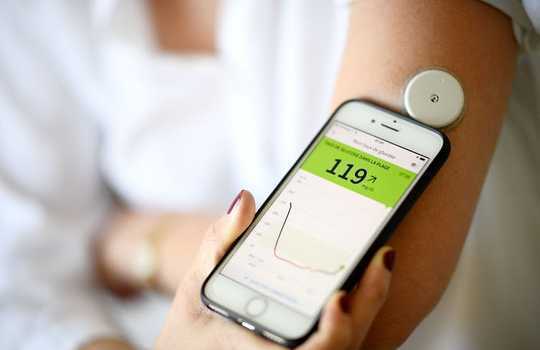
Sugar is not only something that sweetens our food. It is also something that is an essential part of the proteins that make up our bodies.
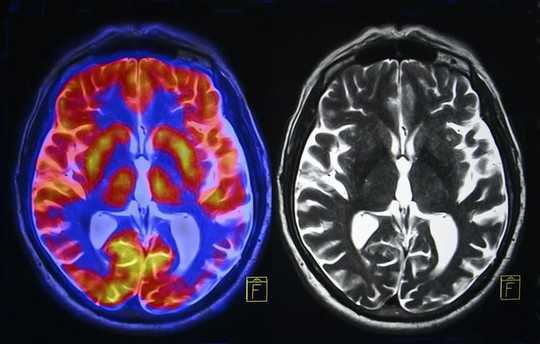
A bit of stress is a normal part of our daily lives, which can even be good for us. Overcoming stressful events can make us more resilient.
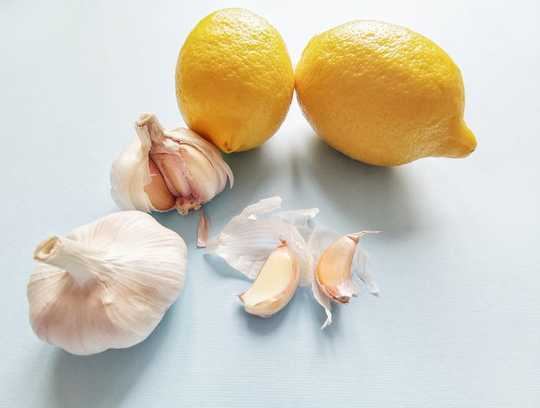
Since the global outbreak of the novel coronavirus (SARS-CoV-2), there have been widespread claims on social media that certain foods and supplements can prevent or cure COVID-19.
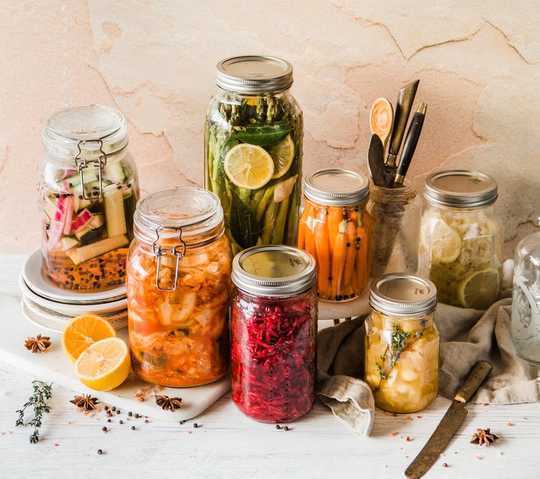
Pickling foods in vinegar or fermenting them in brine is one of the oldest food preservation methods. The earliest archeological evidence comes from Ancient Mesopotania and the Tigris River Valley more than 4,000 years ago.

There are things you can do to make sure the food you’re eating during the COVID-19 pandemic is safe and to limit waste, experts say.

Spending a lot more time in your house doesn’t have to make you any less curious about the world around you.

With streets deserted, hospitals full and morgues struggling to cope with the number of bodies, it isn’t surprising that some people are making comparisons with the apocalypse.
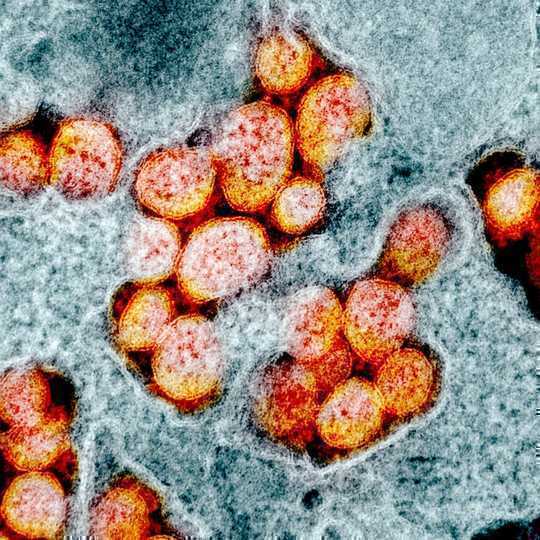
As the COVID-19 pandemic spreads, it has become clear that people need to understand basic facts about SARS-CoV-2, the virus that causes COVID-19, to make informed health care and public policy decisions.
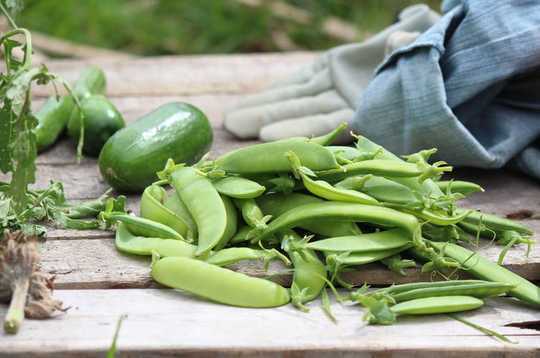
There is a long history of looking to one’s own garden or small farm when the weight of economic and political chaos becomes too much to bear.

It’s August and 38C outside a greenhouse on a fruit farm in suburban Nanjing, China. Inside the farmhouse, customers sample organic grapes and peaches.

Because COVID-19 is a new virus, it’s critical for humans to take extra precautions around animals and pets, says veterinarian Annette O’Connor.

Though the Art of Jin Shin bears some similarities to acupuncture, the practice achieves its transformative results without needles, using only a gentle touch—a methodology that translates very nicely to self-care. All you need in order to get started are your fingers and hands, and a little bit of time and patience.

Our ancestors were extremely awe-inspiring in the ways they incorporated essential oils into not just healing and saving lives, but in every aspect of their daily routines and healing methods. Herbs, plants, and the oils derived from them, were the main components of healing in every culture on earth for hundreds of thousands of years.

Dogs are special. Every dog owner knows that. And most dog owners feel their dog understands every word they say and every move they make.
Page 38 of 155

